
We all know that people don’t hand out poisoned candy full of needles and razor blades on Halloween, right? No, apparently not everyone knows this, because the rumors start afresh every year. Sure, there are instances here and there of foreign objects in Halloween candy, but it’s not as though there’s some mastermind plot at play. From Snopes:
Nearly all such cases turn out to be nothing: they’re pranks played by children on their parents, siblings, or friends; they’re false reports generated by attention-seeking children and adults; they involve material that accidentally, rather than deliberately, ends up in children’s goodie bags; or they’re examples of coincidence mistaken for causation (e.g., a person eats a piece of candy and shortly afterwards feels ill, then erroneously attributes the illness to tainted Halloween candy).
This doesn’t mean you shouldn’t be vigilant in checking your kids’ bounty, but you can rest easy that there’s no one in the neighborhood out to get your kids.
Tainted Halloween candy is far from the only candy-related urban myth. We’ve found more than a handful of them. As you might expect, most of them are tall tales. But some hold true. Can you spot the truthiness in these seven crazy candy myths?
1. Van Halen can’t stand brown M&Ms
TRUTH
Van Halen members might be divas, but that’s not why they demanded the brown M&Ms picked out of their supply. The M&Ms actually served as a safety measure. In Van Halen’s heyday they had an elaborate stage setup that involved detailed lighting and pyrotechnics effects. They included a rider with their standard concert contract that laid out everything needed, and how to set it up safely. But could the venue staff be trusted to read the entire rider?
In their 2013 book Decisive, Chip and Dan Heath describe this as a tripwire. If Eddie, David, Mark, and Alex noticed brown M&Ms in their backstage bowl, they knew that the staff hadn’t read the entire contract. How could they be sure that they set up everything according to proper safety standards as laid out in the contract? So what seems diva-ish is actually an ingenious safety measure.
2. Twinkies will nourish us after the apocalypse
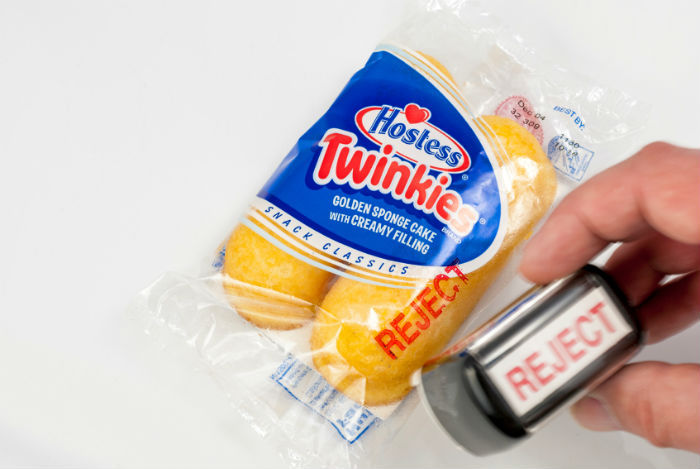
MYTH
The idea of the non-expiring Twinkie has made its rounds in pop culture, perhaps most notably in an old Family Guy episode. Unfortunately, this one just doesn’t hold up. In fact, according to Complex magazine, Twinkies have a shelf life of 45 days — and it was half that when the Family Guy episode aired in 1999. “Without butter, milk, and eggs in Twinkies, they can last exceedingly longer than cakes with those ingredients and not appear like they are rotting,” says the magazine. So the Twinkies will look perfectly edible, but sink in your teeth at your own risk.
3. Pop rocks and soda: a lethal combination
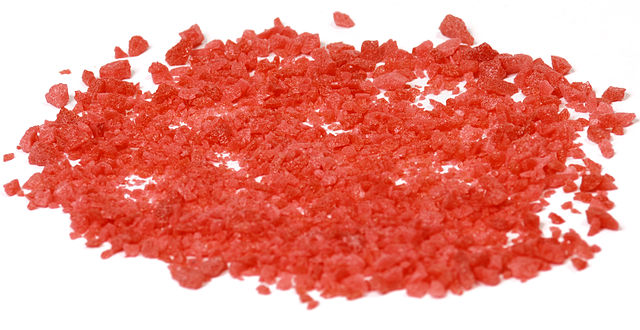
MYTH
No, your stomach won’t explode if you ingest Pop Rocks and soda. It might create some carbon dioxide build-up, but not nearly enough to cause any kind of explosion. Just ask the guys from MythBusters. They performed an experiment, using a pig’s stomach, and way way more Pop Rocks than you could ingest. And guess what? No explosion. So no, Mikey the Life cereal kid didn’t die when he ingested the combination. Also, no, it’s not why Pop Rocks came off the shelves for a while. (Chances are that’s because they’re just not good.)
Along the same lines, no, you won’t die from Mentos and soda. The combination might foam like the Dickens, but since it’s a simple physical reaction between the soda and the surface of the Mentos, it won’t do you any harm.
Want to see some candy that will explode, but not in your stomach? Just put a Jawbreaker in the microwave. Warning: some clean-up probably required.
4. M&Ms blew a chance to appear in ET
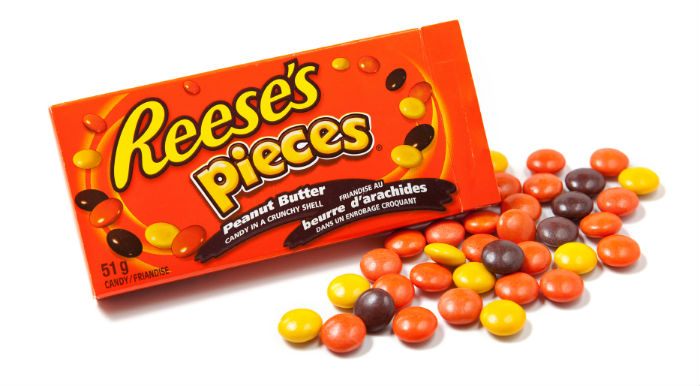
TRUTH
Mars, Inc. did just that. The production company behind the 1982 blockbuster E.T. the Extra-Terrestrial, Amblin Productions, wanted to feature M&Ms in the film. They went to Mars with a proposal, but Mars turned them down. Why? We’ve never gotten a concrete answer. Popular speculation has Mars looking like a bunch of dolts, but chances are there was a more reasonable, business-minded explanation.
Whatever the reason, Mars had to be kicking itself after the film’s release. It was not just a blockbuster, but for a decade it was the highest grossing film of all time. It might have cost M&Ms a sales push, though that wasn’t the biggest issue for Mars. After Mars said no, Hershey said yes and had their candy, the little-known Reese’s Pieces, featured in M&Ms’s place. The result was not only a sales spike for Reese’s, but increased overall awareness. By turning down the E.T. placement, Mars gave rise to a fierce competitor.
For the full story, and it’s a good one, read up at Snopes.
5. The 5 Second Rule
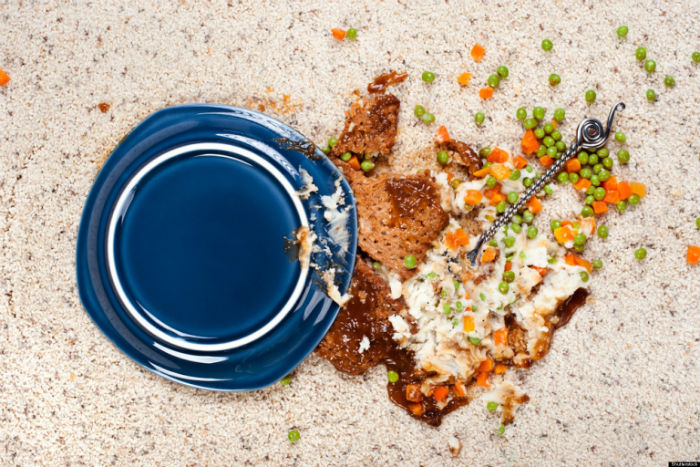
You have about 3 seconds to get this back on the plate.
MYTH
Actually, please don’t. The 5-Second Rule is one big myth. You can read up at How Stuff Works. One prominent experiment used gummy bears, since they’re not as absorbent as, say, a PB&J sandwich. Yet the study found that the gummy bears picked up significant amounts of bacteria within that five-second window.
So much for that then, right? Eh, not so fast. A more recent study claims that the 5 Second Rule might actually have merit. It claims that “time is a significant factor in the transfer of bacteria from a floor surface to a piece of food.” The quicker you pick it up, the lesser chance of bacteria transferring. So thumbs up to the 5 Second Rule, right?
Again, not so fast. The original study did note that bacteria uptake increases — dramatically — with time. It just noted that transfer can happen in as little as two seconds. The more recent study looked at food sitting on the floor for between three and 30 seconds. They might not be seeing anything new, that is.
The biggest takeaway from both studies: the type of flooring plays a large role in bacteria uptake. Drop something on a tile? Fuhgetaboutit. Drop it on the carpet? Maybe you have a bacteria-free window. But you know what? That Ring Ding probably isn’t worth the chance of infection. Toss it and head to the store for another.
6. It takes 7 years to digest chewing gum

MYTH
If you do swallow your gum, you don’t have to worry about it hanging out in your stomach for even seven days, let alone seven years. It passes through your system pretty much the same way as any other substance. You’ll pass it in a day or so, right along with the Mentos you downed with soda.
So what gives? Why does this myth get repeated, despite complete evidence to the contrary? If you ask us, and Snopes, it’s a combination of a few reasons.
It’s indigestible. It’s true that many substances that compose chewing gum are indigestible. But just because something is indigestible doesn’t mean that it sits in your stomach for years. Many foods we commonly eat are indigestible, such as seeds and resistant starches (think the cold potatoes in potato salad). Fiber itself is indigestible.
It’s sticky. Part of the myth surrounding gum digestion probably has to do with its physical properties. If it sticks to our teeth, won’t it stick to our stomach linings? By that logic, wouldn’t it stick to the esophagus on the way down? Apparently gum is not sticky once it enters our bodies. We have chemicals that render that property moot.
We’re not supposed to swallow it. We’re told from a young age not to swallow our gum. The seven-year myth provides adults a fear-based argument, so there’s no real incentive to shine truth on this myth.
7. The Baby Ruth bar is named after slugger Babe Ruth
TRUTH

Why wouldn’t you want your candy bar associated with one of the greatest baseball players of all time? To get an answer, ask Otto Schnering, founder of Curtiss Candy Company, which created the Baby Ruth bar. Well, you can’t ask him, since he’s no longer with us. All we have is his official story, that the bar is named after Ruth Cleveland, daughter of President Grover Cleveland, who died 17 years before the candybar came into existence.
As you might imagine, there are a number of problems with this story. Why Ruth Cleveland? Not only had she died long before the candy’s creation, but her father had last left office in 1897. There was no real relevance there. But do you know who was relevant at the time?
Oddly enough, Schnering argued that Ruth wasn’t famous by 1921, the year the Baby Ruth bar hit store shelves. In 1920 Ruth set the major league record for most home runs in a single season at 54, nearly doubling the previous record — set in 1919 by Ruth himself! Also, non-famous people don’t get newspaper headlines like this when they’re traded:
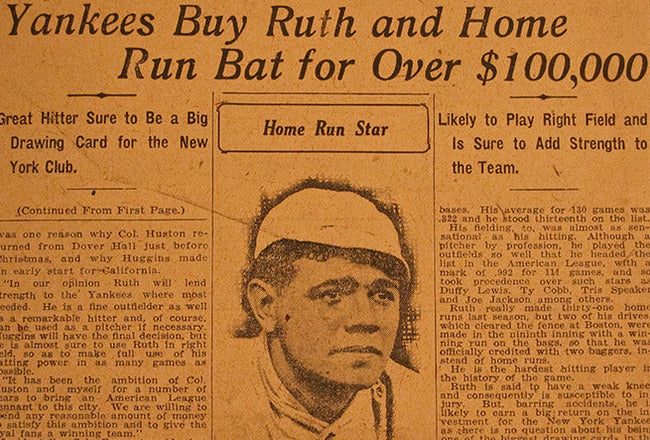
So again, why the vehement denial of an association with Ruth? It’s probably because Curtiss Candy Company did want Ruth’s endorsement, but were refused. From Today I Found Out:
Over and over again they attempted to associate their candy bar with Babe Ruth. The cover story told by the company was simply a way to get around having to pay Babe Ruth royalties for the use of his nickname and last name in their marketing efforts. The Curtiss Candy Company even had to use this story in actual legal proceedings when the manufacturer of the Babe Ruth Home Run Bar challenged the Baby Ruth name in court, claiming the Curtiss Candy Company were using the name without Babe Ruth’s permission, something the makers of the Babe Ruth Home Run Bar had managed to get from Ruth. The Curtiss Candy Company then successfully defended their candy bar’s name using the above “granddaughter of Grover Cleveland” story, which is full of inaccuracies and strains credibility.
Yes. Now it all makes sense.